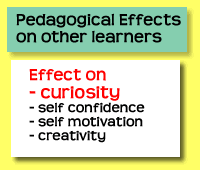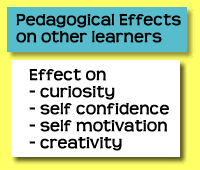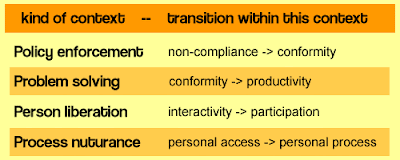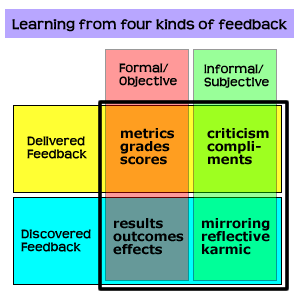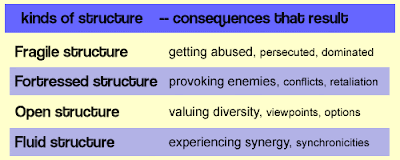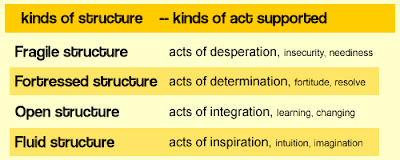When we are in favor of any change, we encounter those who favor stability. In these situations, it's tempting to misjudge the opposition and fall for their deceptive tactics. It's even possible to "bark at the decoy" and miss where the real resistance lies. I agree with Stephen's assessment of industry's role in the resistance to educational reforms:
Industrial democracies have let down "we the people" by their courts giving rights to corporations. Their legislatures are under-funding policy enforcement and the leadership forsaking their oversight role to prevent the harmful effects of corporate irresponsibility. It appears that corporations are in control of social priorities, debates and legislative agendas. Industrial democratic governments have been reduced to lapdogs, hand maidens and co-conspirators. All is not as it appears, however.The existing state of education, rather than being one in which the "engine is government" is one designed and controlled to a large degree by industry, with the willing compliance of government.
 Sometimes a show of strength reveals real power and control of the situation. Other times, a show of strength is a sign of weakness. Bullies overcompensate for their troubling insecurities by being obnoxious. Immobile predators put on a display of prowess to intimidate their enemies. Sharks are vulnerable to flank attacks by dolphins bludgeoning their rib cages.
Sometimes a show of strength reveals real power and control of the situation. Other times, a show of strength is a sign of weakness. Bullies overcompensate for their troubling insecurities by being obnoxious. Immobile predators put on a display of prowess to intimidate their enemies. Sharks are vulnerable to flank attacks by dolphins bludgeoning their rib cages.
I see industry's obstruction of educational reform as mere intimidation tactics. Industry has many reasons to be really insecure, vulnerable and inherently powerless. Their bullying sends a loud message about how much they are in peril. Stephen continues:
I agree that industry will not let go and will think it can preserve a social order of inequality and exploitation. That's how they will lose out in the end. The way to catch a monkey is to put a banana in a sealed box with a hole large enough for the monkey's hand to slip through. The monkey will cling to the banana at all cost, just like an invader that cannot withdraw from foreign territory while depleting every available resource.Industry will not easily let go of its control of education. Nor will it easily surrender to "distributed and democratized methods." What industry preserves is not merely a certain way of doing things but also a social order in which the 'captains of industry' enjoy disproportionate wealth and influence.
Reversals of fortune occur when the big shot gets over confident. "The first become last" when hubris, conceit and arrogance overrule humility, sensitivity and responsiveness. Clinging to pride and past successes proves to be the winner's undoing.
The way to achieve a "Cinderella victory" is to count on the predictable victor succeeding by clinging to what has always worked. Coming from behind, defeating the giant with a slingshot, tricking the witch to break her spell -- all occur by relying on the opponent's tenacity. The tyrant's inability to let go -- proves to be his or her downfall.So I agree on the existing appearances of power and control, but not what that means or implies for educational reforms. (to be continued).


